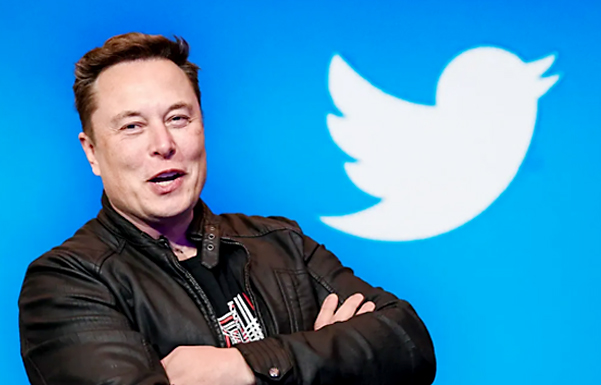Twitter, the popular social media platform, faced a challenging second quarter in 2022, reporting revenue that fell short of Wall Street estimates and swinging to a net loss. The company attributed some of these setbacks to Elon Musk’s attempt to withdraw from his acquisition deal, creating an air of uncertainty around the company’s future. This article delves into Twitter’s Q2 performance, the impact of Musk’s involvement, and the ongoing legal battle that has left the tech world in suspense.
Twitter’s Q2 Financial Snapshot
In the second quarter of 2022, Twitter reported total revenue of $1.18 billion, marking a 1% decline compared to the same period in the previous year. This decline raised concerns among investors and analysts, as they had anticipated more robust results. Twitter cited “advertising industry headwinds associated with the macroenvironment” and the “uncertainty related to the pending acquisition of Twitter” by Elon Musk as contributing factors to its underwhelming financial performance.
What is particularly striking about Twitter’s Q2 report is the unexpected shift from profitability to a net loss. While investors were expecting Twitter to be in the black during this period, the company reported a net loss of $270 million. When accounting for stock-based compensation expense and other items, the adjusted net loss per share amounted to 8 cents. This is a stark contrast to the $66 million net income Twitter reported during the same quarter in the previous year.
Elon Musk’s Involvement and the Acquisition Saga
Twitter’s Q2 results were not just a reflection of the company’s performance but also a testament to the turmoil caused by Elon Musk’s involvement. Musk’s interest in acquiring Twitter sent shockwaves through the tech industry and the financial world. His offer to acquire the social media platform for a staggering $44 billion caught many by surprise.
However, the situation quickly turned contentious as Twitter accused Musk of repeatedly disparaging the platform and the acquisition deal. Twitter claimed that Musk’s actions created business risk and exerted downward pressure on its share price. Musk, on the other hand, countered these allegations by demanding verification of Twitter’s claim that fake and spam accounts constituted less than 5% of its Daily Active Users (DAUs). He insisted that Twitter’s actions were driven by buyer’s remorse and bad faith.
As the legal battle between Twitter and Musk continues to unfold, a trial date was set for October in the Delaware Court of Chancery. This trial will be a significant milestone in determining the fate of Twitter and its potential acquisition by Elon Musk.
Analyst Expectations vs. Reality
Market analysts had high expectations for Twitter’s Q2 performance, anticipating revenue of $1.34 billion and adjusted earnings of 14 cents per share, according to financial data provider Refinitiv. However, the company’s actual results fell notably short of these projections.
This disparity between expectations and reality further fueled concerns among investors, who were left grappling with uncertainty about Twitter’s ability to navigate the challenges in the digital advertising landscape. The fact that Twitter could not meet these expectations also highlighted the level of disruption caused by Musk’s acquisition attempt.
Digging Deeper into Twitter’s Financials
To gain a more comprehensive view of Twitter’s Q2 performance, it is essential to consider certain factors that may have been overshadowed by the Elon Musk saga.
Firstly, it’s worth noting that Twitter’s reported revenue figure of $1.18 billion included the impact of its divestment of in-app ad unit MoPub, which was sold in Q4 for $1.05 billion. Excluding MoPub, Twitter’s topline growth showed more promise, standing at 3%. This indicates that Twitter’s core business may have experienced some growth even amid the challenging macroeconomic environment.
Additionally, Twitter’s advertising revenue, a critical metric for the company, increased by 2% to $1.08 billion during the second quarter. When factoring in foreign exchange rates, this growth rate extended to 6%. While this may not be an astronomical surge, it does signify a level of resilience within Twitter’s advertising business, despite the external pressures it faces.
User Growth and Monetization
Another aspect of Twitter’s Q2 performance that warrants attention is its user growth and monetization strategy.
During the second quarter, Twitter witnessed a notable increase in its average monetizable daily active users (modus). This metric grew by 8.8 million sequentially, reaching a total of 237.8 million. This marked a substantial 16.6% year-over-year growth, indicating that Twitter continues to engage and attract users to its platform.
In the United States, Twitter’s average mDAUs for Q2 reached 41.5 million, representing a 14.7% increase compared to the same period in the previous year. This growth in the U.S. market is particularly significant as it demonstrates Twitter’s ability to retain and expand its user base in its home country.
These user growth figures may offer a glimmer of hope for Twitter, suggesting that it still has the capacity to compete in the social media landscape and remain relevant to users.
Market Response and Musk’s Offer
Following the announcement of Twitter’s Q2 earnings, the market responded with a 2% drop in Twitter’s stock during premarket trading, causing it to fall below $39 per share. This decline was particularly notable given that Elon Musk had previously offered to acquire Twitter at a price of $54.20 per share.
The market’s reaction reflects the uncertainty and skepticism surrounding the acquisition deal and Twitter’s overall future. Investors and analysts are closely monitoring developments in the legal battle between Twitter and Musk, as the outcome will likely have a significant impact on Twitter’s stock price and strategic direction.
Broader Industry Challenges
While Elon Musk’s role in Twitter’s recent challenges has garnered significant attention, it is essential to acknowledge that Twitter is not the only tech company grappling with obstacles in the digital advertising landscape.
On the same day that Twitter reported its Q2 earnings, Snap Inc., the parent company of Snapchat, also announced earnings that fell short of already-reduced expectations. Snap attributed this shortfall to a significant slowdown in demand growth on its advertising platform. The company also highlighted the intensifying competition for shrinking advertising budgets as a key factor affecting its revenue.
This parallel between Twitter and Snap underscores the broader challenges faced by social media platforms and digital advertising players. The advertising industry is evolving rapidly, and platforms must adapt to changing consumer behavior, privacy concerns, and competitive pressures.
Twitter’s Forward-Looking Guidance
One notable aspect of Twitter’s Q2 report is the absence of forward-looking guidance. The company did not host a Q2 earnings call, nor did it provide an investor letter discussing its results. Twitter cited “the pending acquisition by an entity affiliated with Elon Musk” as the reason for this lack of communication.
This absence of guidance leaves investors and analysts in a state of uncertainty, as they are left to speculate about Twitter’s future direction and financial prospects. The outcome of the legal battle with Musk will likely play a pivotal role in shaping Twitter’s strategic decisions and its ability to provide meaningful guidance to stakeholders.
Uncertainty and Opportunity
Twitter’s Q2 2022 performance and the ongoing Elon Musk acquisition saga have cast a shadow of uncertainty over the company. While the financial results fell short of expectations and the legal battle remains unresolved, there are glimpses of potential for Twitter to rebound.
The company’s user growth and engagement metrics indicate that it continues to hold appeal for a sizable audience. Additionally, the resilience of its advertising business, despite industry headwinds, suggests that Twitter’s core revenue source remains viable.
However, Twitter’s path forward is clouded by the legal dispute with Musk and the broader challenges facing the digital advertising industry. Investors and analysts will be closely watching developments in the coming months, as the trial in October approaches and Twitter’s strategic direction becomes clearer.
In the dynamic and ever-evolving landscape of social media and digital advertising, Twitter’s ability to navigate these challenges while maintaining its user base and profitability will be a storyline worth following closely. As the Twitter-Elon Musk saga unfolds, it serves as a reminder that even in times of uncertainty, opportunities for growth and transformation may emerge.




